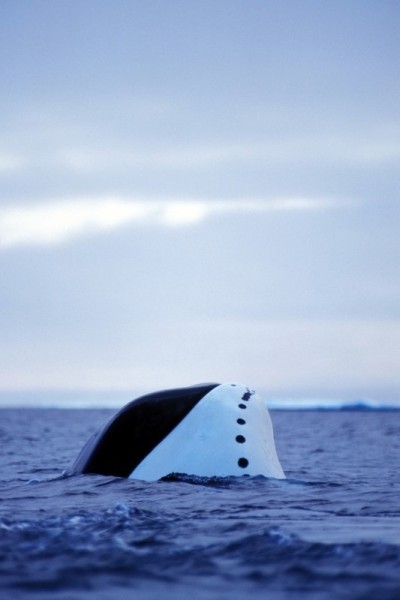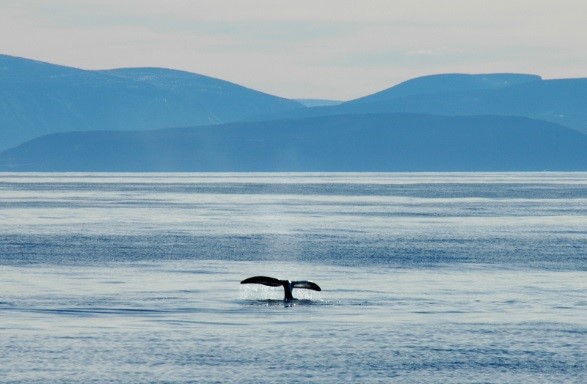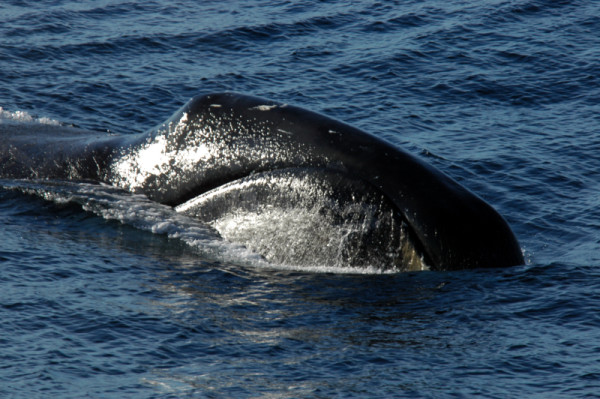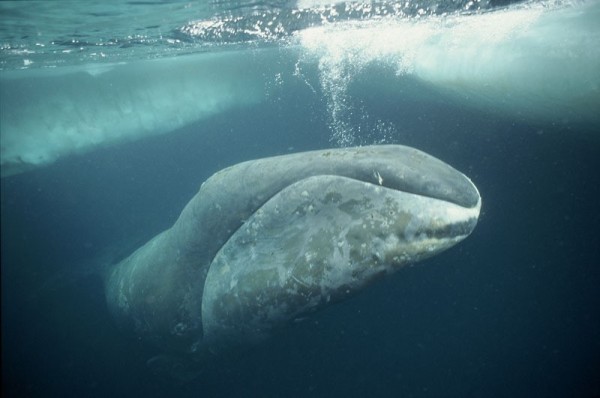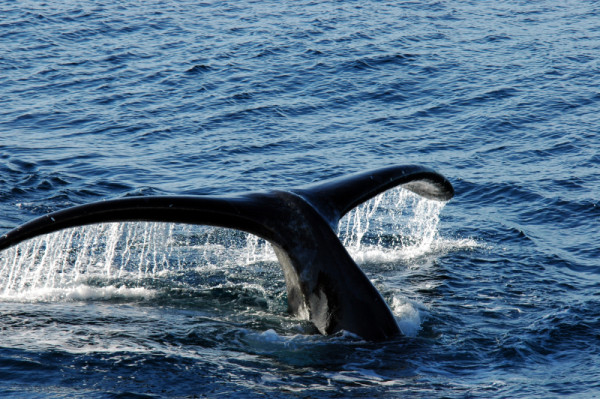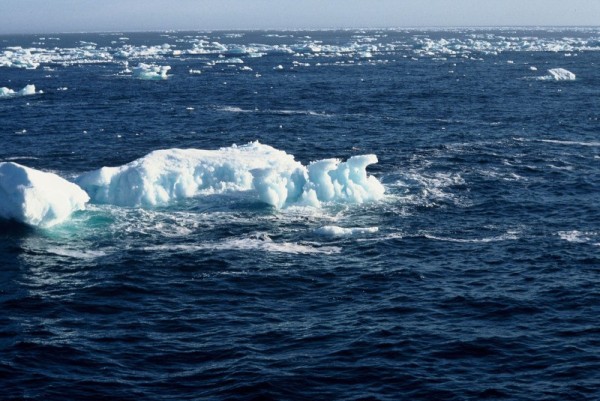Diving deep with bowhead whales
It can be a mysterious world under the Arctic sea-ice, the habitat of the bowhead whale. For much of the year bowheads like to be amongst the ice – which can make the species difficult to observe. These whales are found in the waters of the Arctic Ocean, Beaufort sea and Hudson Bay in Canada, and the Bering and Chukchi seas between Alaska and Russia. One of just three year-round endemic Arctic whale species, bowheads are famous for their massive bow-shaped heads with mouths so big you could drive a full-sized tractor-trailer through it! Here are facts you might not know about these Giants of the Arctic.
They are big headed (literally!)
Their heads make up about a third of the total length (which in adults can be up to 20 metres – newborn calves are about 4 metres long and weigh 2-3 tonnes). Bowheads are able to use their large reinforced skulls and powerful bodies to break through ice 20 cm thick.
Great divers
Bowheads can dive for over 30 minutes at a time! Like the other ice whales (narwhal and beluga), bowheads have no dorsal fin, enabling them to surface through moderately thick sea-ice if necessary. They spend the entire year in Arctic waters, their travels shaped by the melting and freezing of the ice, and seasonal movements to a series of predictable spring-summer productive feeding areas.
Sociable beings
© Tim Stewart / WWF-Canada
They are also known in quiet Arctic waters for their intense bouts of social group interactions, involving tail and flipper slapping, and breaching (leaping entirely out of the water) – an impressive feat for whales that weigh up to 100 tonnes!
And, they can sing too!
Like other whale species who sing, bowheads appear to have the greatest number and diversity of songs! Some of the most beautiful and enticing sounds in the natural world are made by singing animals. The bowhead whale has the most impressive repertoire of all whales, and scientists have just recorded 12 unique songs being sung by bowhead whales on their annual migration.
They live a long time
Bowhead whales can live for over 150-200 years, making them the longest-lived wild mammals on the planet.
They are facing serious threats
Bowheads are known to be very sensitive to sound disturbance in the silent depths of the Arctic Ocean in which they have evolved. Increased commercial shipping, military activities, and hydrocarbon exploration and development present threats to the ocean.
Our Arctic work depends on your support and right now you can have double the impact. Donate now and a generous donor will match your gift (the first $130,000 in donations will be matched).
Learn more about WWF’s important Arctic work at wwf.ca/polarbearweek.

